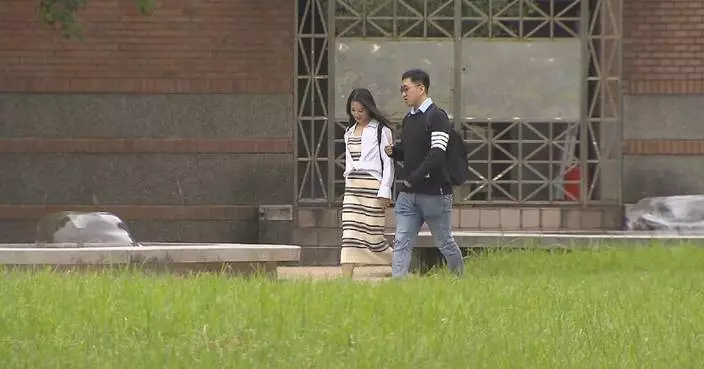China's railway system is expected to handle 18.65 million passenger trips on Sunday, the last day of the five-day Labor Day holiday, an increase of nearly one million trips over Saturday.
The Guangzhou Railway Group, which is based in densely-populated Guangdong Province in south China, plans to operate 16 additional passenger trains, which mainly travel through Guangdong cities of Guangzhou, Shenzhen, Chaozhou and Shantou, as well as Changsha, capital of neighboring Hunan Province. Affected by rainy weather, some trains passing through east China's Jiangxi Province on the Beijing-Kowloon Railway have been delayed.
As more and more holidaymakers set out on their return journeys, China's highways are expected to see traffic peak between 4 p.m. and 6 p.m. on Sunday.
To serve an increased number of new energy vehicle (NEV) drivers, a service area in Guangrao County in east China's Shandong Province, for example, has installed more charging piles to ensure most vehicles can be fully charged in about half an hour. Meanwhile, staff are in place to maintain a good order.
"There are workers helping drivers charge their vehicles and maintain everything in good order at the station. It is convenient and time-efficient," said Ren Yuanxiang, a driver.
In terms of civil aviation, airports in China's four first-tier cities, namely Beijing, Shanghai, Guangzhou and Shenzhen, are expecting a large number of passengers on Sunday. The country is forecast to operate 17,300 civil flights and handle 2.18 million passenger trips on the day.

China expects 18.65 mln rail passengers on last day of Labor Day Holiday
Chinese scientists have recently worked together and rebuilt the face of an ancient Chinese ethnic minority emperor via cutting-edge DNA technology.
Emperor Wu of the Xianbei-led Northern Zhou Dynasty (557-581), also known as Yuwen Yong, was an ambitious leader who died at 36. He belonged to the Xianbei nomadic group, which originated from the Mongolian Plateau.
The tomb of the emperor was discovered in 1993 in a village of the city of Xianyang in northwest China's Shaanxi Province. His skull and bones were discovered during an excavation held in 1994 and 1995 at the site of his tomb.
In late March this year, scientists led by the Shaanxi Provincial Institute of Archaeology and the Institute of Archaeological Science of Fudan University managed to decode key features of the emperor and speculate about his cause of death. The emperor might have died from chronic arsenic poisoning due to long-term use of a pellet, which was believed by ancient people to achieve eternal life.
"First, the skeleton can be used to determine age. Second, in terms of age and gender, some pathological research can also be done to see if he had any fractures or other (diseases)," said Zhang Jianlin, a researcher from the Shaanxi Provincial Institute of Archaeology.
Obtaining high-quality genomic data is crucial for restoring the face. Through DNA paleogenomics techniques and optimized DNA extraction, database building and capture methods, more history was revealed.
"First, we have done the shorter fragments enrichment method, which is a DNA extraction method. In addition, we have developed some more sensitive database building method suitable for ancient samples with short fragments. You can regard it as a method to amplify the genetic signal, the extracted DNA. The third is that we have developed a capture method that is more suitable for this kind of highly degraded ancient samples. So we have optimized and improved our approach from three aspects at the same time," said Wen Shaoqing, an associate professor of the Institute of Archaeological Science of Fudan University.
The reconstructed face showed that Yuwen Yong had black hair, yellow skin and brown eyes, while his appearance was typical for people from East or Northeast Asia.
Wen said that with the help of the DNA technology, the accuracy of facial restoration can reach 90 percent.
"As for the accuracy of (facial restoration), the current situation is that if there is a skull as a basis, its accuracy will be relatively high," said Wen.

Scientists rebuild face of ancient emperor using advanced DNA technology










